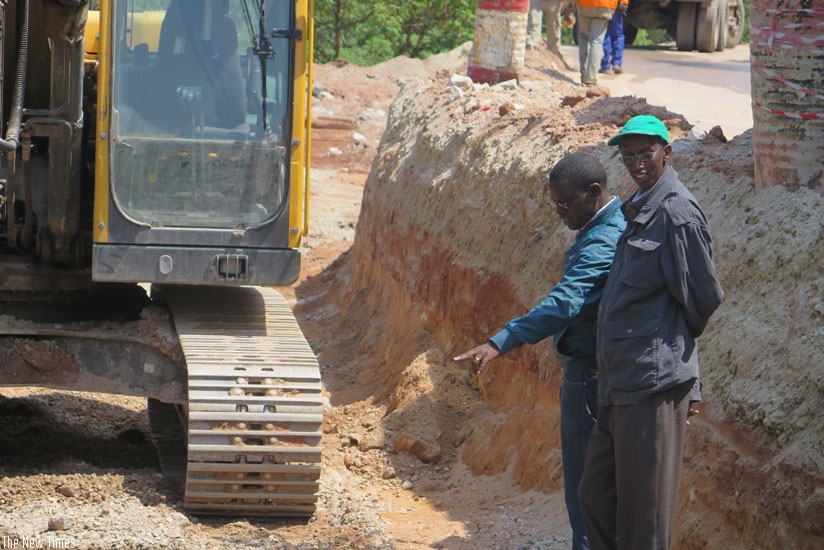Efforts by the government and other stakeholders to expand the country’s exports base and increase the sector’s foreign exchange receipts need to be fast-tracked to ease the growing trade imbalance the country is currently experiencing, experts have said.


Efforts by the government and other stakeholders to expand the country’s exports base and increase the sector’s foreign exchange receipts need to be fast-tracked to ease the growing trade imbalance the country is currently experiencing, experts have said.
Rwanda recorded a 0.3 per cent trade deficit over the third quarter of last year, spending $481.1 million (Rwf370.4 billion) on imports compared to $96.14million (Rwf74 billion) from exports. Total exports decreased by 26.07 per cent during the period. On the other hand, the import bill increased by 12.5 per cent from $427.75 million during the same period in 2014, and rose by 2.23 per cent compared to the second quarter of 2015. Rwanda’s total trade increased to over $623 million (Rwf479.7 billion) during the third quarter 2015, up from $614.9 million (Rwf473.5 billion) in 2014, the National Institute of Statistics of Rwanda (NISR) quarterly report indicates.
Increasing import Expenditure explained
NISR attributed the increase in the import bill to expenditure driven by the country’s need to industrialise and attain a middle-income status.
"Therefore, high expenditure on imports, especially those in priority sector, could have had a negative impact in the short-term but will yield positive economic impact in the long-run,” officials at the statistics body said.
Experts take
According to economists, Rwanda’s global trade structure and performance of non-commodity sources of growth such as the financial and service sectors is an assurance that the country could perform much better this year.
In a recent interview with The New Times, Teddy Kaberuka, an independent economic analyst, said steady growth exhibited by the economy in 2015 was likely to persist as Rwanda’s export targets are less likely to be greatly affected by the economic slowdown.
"Most of the countries that Rwanda exports to are in the European Union, and in the US. This, to a certain degree, reduces the shock to the economy as these countries are less likely to be greatly affected,” Kaberuka argued.
He added that the good performance exhibited by non-commodity sources of growth last year, such as the financial and service industry, was likely to continue this year.
The government has over the past two or so years increased initiatives aimed at widening the country’s exports base and revenues, including forming partnerships with the private sector in a scheme where it is supporting export-oriented firms, as well as building infrastructure required by the sector.
This, it is expected, will help build the capacity of the industry and increase exports volumes and earnings and, hence narrow down the trade deficit gap in the short to medium-term.
The government has so far signed performance agreements with over 36 companies under this programme, and looks to also boost capacities of the SME sector so that it can produce for the export market. Already, the two parties have agreed to increase production, invest in value-addition projects and market linkages to spur export volumes. Under the country’s development blueprint, the second Economic Development and Poverty Reduction Strategy (EDPRS II) Rwanda targets to increase earnings to 28 per cent annually 2018.
Exports
Meanwhile, coffee remained the country’s largest export earner, bringing in $25.12 million (Rwf19.3 billion) in the third quarter of 2015, while niobium, vanadium ores, tantalum and concentrates earned $15.8 million (Rwf12.2 billion), while black tea (fermented) fetched $9.38 million), unwrought gold fetched $7.80 million, and tin ores and concentrates earned $7.3 million in export revenues. Switzerland, Kenya, the Democratic Republic of Congo, the United States of America and the United Arab Emirates remained Rwanda’s top five markets for the country’s exports, accounting for 65.7 per cent share of total value of domestic exports, valued at $63.2 million (Rwf48.7 billion).
The mining sector, which is one of the country’s top foreign exchange earners, was affected by poor prices on the global market, with minerals such as cassiterite, coltan and wolfram the hardest-hit.
As a result, earnings from the mining sector dropped by 43.3 per cent, as mineral prices plummeted internationally on account of reduced demand from China, the main buyer of metals, due to an economic slowdown in the country. However, Rwanda, a net oil importer, benefited from declining global oil prices that saw the country’s import bill reduce by 2.6 per cent during the third quarter of last year.
Import sources for Rwanda were mainly China, Uganda, Kenya, India, and Japan, from where the country bought electronics, telecommunication equipment, construction materials and medicine. According to the report, the country imported mainly cement ($19.4 million), telephones for cellular networks and other wireless worth $19.24 million, and medicines ($16.4 million). More than $12.16 million was spent on fuel, while $9.56 million was used to buy fertilizers, fueled by the need to increase production in the agriculture sector.
"Such expenditure responds to the fact that the country is spending a lot on infrastructure development that will drive economic transformation in the long-run,” experts at NISR said.
Re-exports decline
Earnings from Rwanda re-exports dropped by 27.7 per cent to $46.01 million, down from $63.7 million in the same period in 2014. Rwanda’s top five destinations for re-exports during the third quarter 2015 were the Democratic Republic of Congo, Burundi, Sri Lanka, Kenya and the United Kingdom.
The DR Congo accounted for 78.48 per cent share of the total re-exports, with gasoline premium earnings recorded at $ 12.46 million, and kerosene jet fuel brought in $ 3.29 million, among others.


